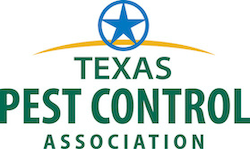Mosquitoes
- Here in the greater Houston area, over 50 species of mosquitoes can be found. The five most problematic species are Aedas Aegypti, Asian Tiger, Aedes Albopictus, Culex Pipiens, and Anopheles quadrimaculatus.
- Aedes aegypti carries Zika, dengue and chikungunya, among other viruses. Because they live near and prefer to feed on people, they are more likely to spread viruses than other species, and are, therefore, of the biggest concern.
- The Asian Tiger species is aggressive and, unlike other species, frequently feed during the day. They commonly carry West Nile, dengue, and yellow fever.
- Aedes Albopictus, although usually harmless to humans, is a particularly large concern for pets and furry friends. They usually carry equine encephalitis and heartworms.
- Anopheles quadrimaculatus, aka the malaria mosquito, chiefly feed on humans and other large mammals. They are the by and large the biggest known vector for malaria in the United States.
- Culex Pipiens, or the common house mosquito, is especially known to carry diseases such as meningitis, encephalitis, canine heartworms, and plasmodia that cause avian malaria.
- Adults live for about two to four weeks based on the species, humidity, temperature, and other factors. Females frequently live longer than males.
- Due to needing blood to produce eggs, only females bite and feed from humans and animals. As a result, humans are frequently left with a bump and itching at the site of the the bite.
- Females lay eggs in water. However, different bodies of water attract different species.
- Permanent water mosquitoes usually lay their eggs in permanent-to-semi-permanent bodies of water.
- Some prefer clean water; meanwhile, others prefer nutrient-rich waters.
- Some lay eggs near the edges of lakes and ponds, or among plants in swamps and marshes, while other lay eggs in containers that hold water.
- Floodwater mosquitoes species lay their eggs either in moist soil or in containers above the water line. First the eggs dry out, then hatch when rain floods the soil or container. Floodwater habitats include:
- Temporary pools and ponds created by melting snow or rain
- Floodplains along stream and river banks
- Irrigated fields and meadows
- Containers that hold water and fill up after a rain shower
- Tree holes that collect rainwater
References
- CDC. “What Is a Mosquito? |CDC.” Centers for Disease Control and Prevention, 5 Mar. 2020, www.cdc.gov/mosquitoes/about/what-is-a-mosquito.html. Accessed 15 Dec. 2022.
- “Culex Pipiens – Factsheet for Experts.” European Centre for Disease Prevention and Control, 12 June 2015, www.ecdc.europa.eu/en/all-topics-z/disease-vectors/facts/mosquito-factsheets/culex-pipiens-factsheet-experts. Accessed 15 Dec. 2022.
- Rios, Leslie M., and C. Roxanne Connelly. “Common Malaria Mosquito – Anopheles Quadrimaculatus Say.” Ufl.edu, Oct. 2012, entnemdept.ufl.edu/creatures/aquatic/Anopheles_quadrimaculatus.html. Accessed 15 Dec. 2022.
- Walton, William, and Mark Hoddle. “Asian Tiger Mosquito.” Center for Invasive Species Research, 2022, cisr.ucr.edu/invasive-species/asian-tiger-mosquito.






